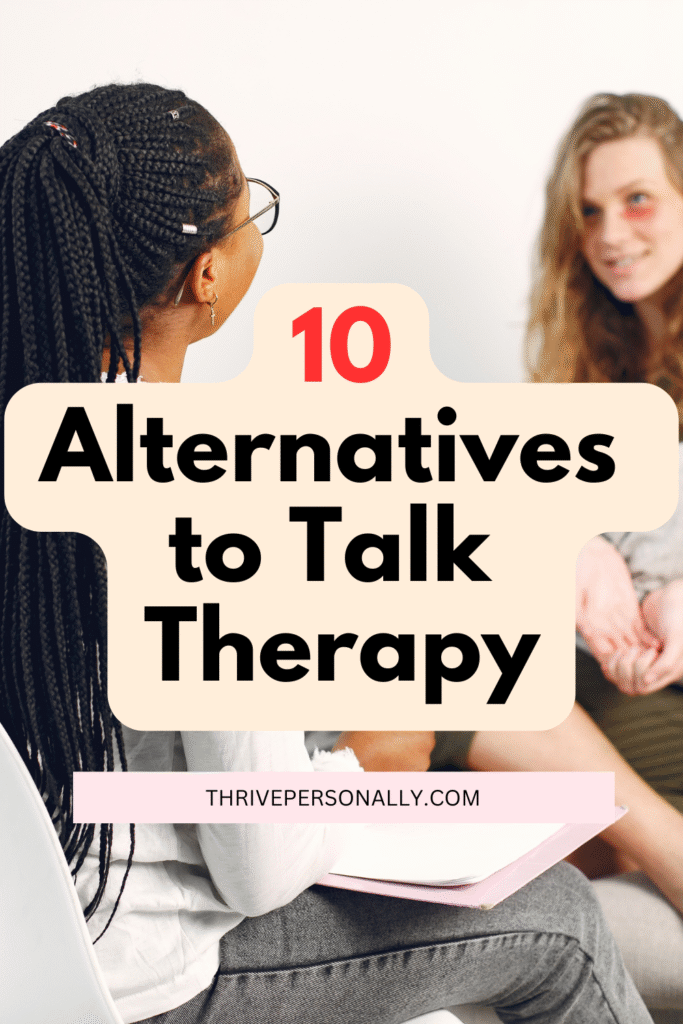Talk therapy is one of the most common ways people deal with stress, trauma, and emotional pain. It has been used for years to help people feel heard and supported. In this form of therapy, you speak to a trained counselor about your feelings, thoughts, and life experiences. But even though talk therapy can help many people, it’s not the only way to heal. Some people find it difficult, tiring, or just not the right fit.
Not everyone is comfortable talking about everything. Some are not ready to speak about their pain. Others may want a different way to express themselves. And many people don’t have access to a therapist. Whatever your reason, it’s important to know that healing is not one-size-fits-all. If talk therapy isn’t working for you, there are other ways that can still help you grow and feel better.
Below are 10 non-talking therapies that can help you heal.
1. Creative Expression and Art
Sometimes, you don’t have the words for what you’re feeling. But your hands, your eyes, and your body know how to show it. Art therapy lets you express emotions without needing to speak. Drawing, painting, sculpting, or doing any kind of creative work can stir emotions and help them move through you.
Art helps your brain process stuck feelings. It brings buried emotions to the surface and makes them easier to manage. Even if no one sees your artwork, the act of making it can be calming. Trained art therapists can guide you through it, or you can simply do it on your own.
Read also: 10 Effective Emotional Resilience Activities
2. Journaling and Writing
Though it involves expressing thoughts, journaling is not talk therapy because you aren’t speaking to anyone—just writing. Writing lets you slow down your thoughts and see them more clearly. You can write about how you feel, how your day went, or what’s happening inside you.
Journaling helps make sense of your emotions. It often leads to insights you didn’t expect. It helps spot patterns, track triggers, and notice your growth over time. It gives you a way to let feelings out instead of holding them in. You can keep your writing private or share it later if you’re ready.
Read also: 10 Bullet Journal Ideas for Practicing Gratitude
3. Movement-Based Healing
Your emotions live in your body. Stress, fear, sadness, and anger don’t just stay in your mind—they show up in your muscles, posture, and energy. That’s why moving your body can be part of your healing.
Activities like yoga, walking, dancing, or swimming help you feel grounded and present. You don’t need to be skilled. Just move in ways that help you connect to your body. Movement releases tension and makes room for calm to settle in.
According to Harvard Health, regular physical activity has strong effects on easing depression and anxiety, improving sleep, and boosting self-esteem.
Read also: 50 Practices of Self Love to Transform Your Life
4. Mindfulness and Meditation
It’s easy to get lost in your thoughts, plans, or worries. Mindfulness teaches you to pause and notice what’s happening right now—without judging yourself. It’s not about forcing positive thinking. It’s about being aware of your breath, your body, and your thoughts without getting swept up in them.
Mindfulness is often practiced through meditation. It helps reduce stress and gives you tools to deal with tough emotions. Even a few minutes a day can make a difference. Over time, your brain becomes more relaxed and focused.
A study by the NCCIH shows that mindfulness can help manage pain, anxiety, and depression.
5. Sound Healing and Music
Sound affects both your mind and body. It can lift your mood, slow your heart rate, and reduce stress. Sound healing, also known as music therapy, is a growing field. You don’t need to be a musician—just listening to calming music or playing an instrument can make you feel better.
Some people use sound bowls, bells, chimes, or even humming to help them relax. Others feel comfort from singing or listening to songs they connect with. Music reaches parts of us that words can’t.
6. Outdoor Time and Nature
Spending time in nature helps your brain reset. The natural world calms your nervous system. Trees, water, fresh air, and sunlight give your mind and body a break from stress.
Even a short walk in a peaceful place can ease your mind. You begin to notice simple things—the chirping of birds, the feeling of the wind, or the warmth of the sun on your skin. These little moments remind your body that you are alive, safe, and present.
According to Frontiers in Psychology, green spaces help balance your emotions, especially during stressful times.
7. Breathwork
Breathing is something you do without thinking—but it can also be used as a powerful healing tool. When you slow your breathing or control it mindfully, it calms your nervous system. It tells your brain that you’re safe.
There are many kinds of breathwork, but all help you feel present, calm, and connected. You can use breathwork in the middle of a stressful moment or practice it daily to stay balanced. It can ease anxiety, panic, and overwhelm.
8. Spiritual Practices
For many people, healing includes a spiritual side. This doesn’t always mean religion. It might be a belief in something bigger than yourself, a time to reflect, or a way to feel connected to life.
Spiritual practices include prayer, solitude, reading spiritual books, lighting candles, or simply thinking about your place in the world. These quiet moments can give comfort, meaning, and strength in hard times. They remind you that you are not alone—even when life feels heavy.
9. Body-Based Therapies
These therapies focus on how your body holds and reacts to emotional pain. They include massage, acupuncture, reflexology, and craniosacral therapy. These practices help release tension and restore balance to your body and mind.
Other methods like Somatic Experiencing and Emotional Freedom Technique (EFT) are designed to help you feel and release stored trauma. They help you feel safer in your body and more in control of your emotions.
10. Shared Healing Spaces and Peer Support
Sometimes, healing is easier when you’re not alone. You may not feel ready to speak with a therapist one-on-one, but being in a safe space with others who’ve been through similar things can still be powerful. That’s where peer support comes in.
Peer support groups bring together people with shared experiences. These spaces offer connection, comfort, and understanding—without pressure. You can listen, speak when ready, and feel less alone. These groups are built on trust and care, focusing on growth rather than fixing or advice.
Final Thoughts
There is no single path to healing. You don’t have to sit in a room and talk about everything to get better. For some, talk therapy works. For others, it doesn’t. The good news is—you get to choose what works best for you.
These 10 alternatives to talk therapy give you options. They show that healing can come through your hands, your breath, your movement, your journal, or even from trees outside your window. Healing doesn’t have to be loud. It can be creative. It can be still. It can even be silent.
What matters most is not how you heal—but that you do. Be patient with yourself. Try one thing. Healing is not a race. It’s your journey. Let it be true.
Save the pin for later



